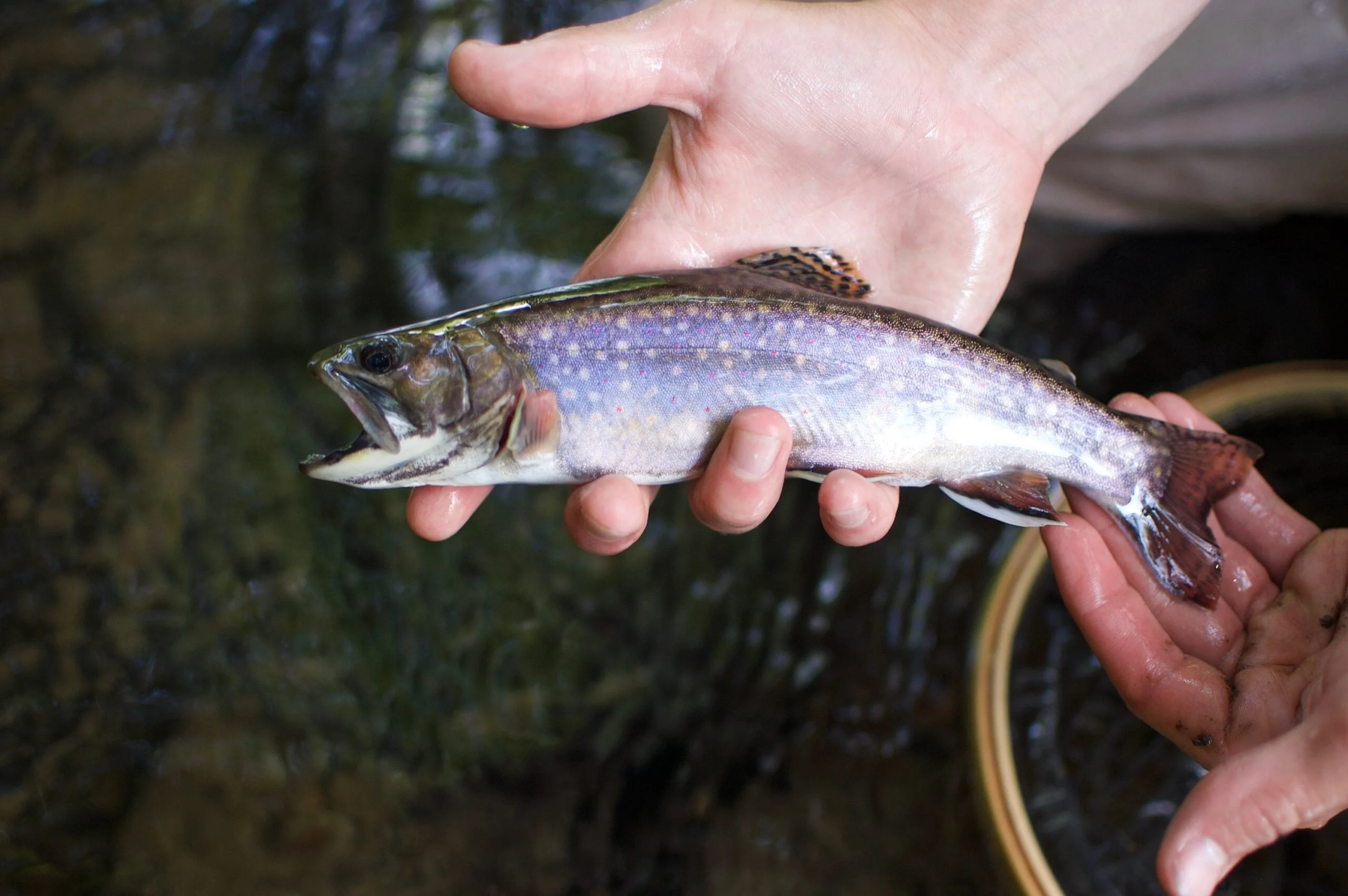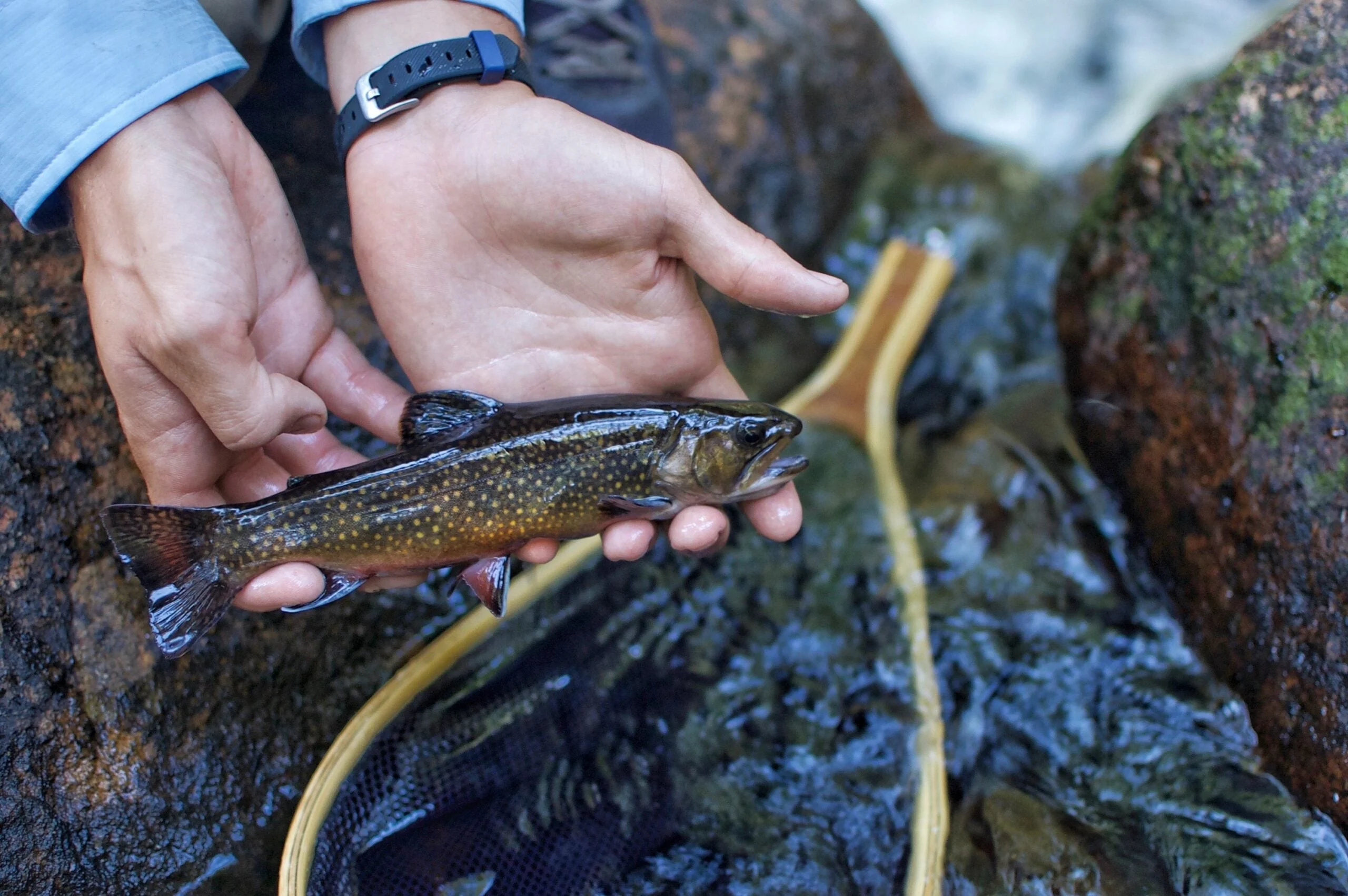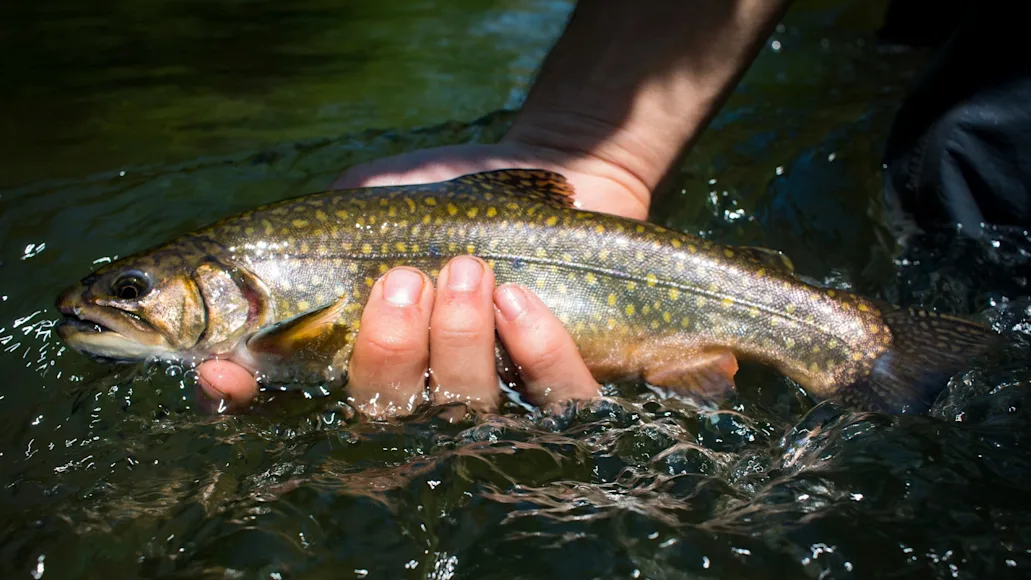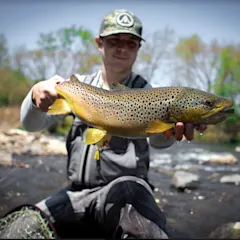Brook trout, or brookies as they are commonly referred to, are synonymous with the Northeast and small mountain streams
. While technically a char, the species is almost always grouped together with rainbow and brown trout
. Historically, they are the predominant trout/char species in the Northeast part of the country. However, once rainbows and browns were introduced, the dynamics of many Northeast trout fisheries changed.
Now, native brook trout compete with browns and rainbows for critical habitat. Nevertheless, many hidden streams and creeks scattered throughout the East are still filled with native brookies. Small mountain streams with cold water and excellent bug life hold strong populations of these beautiful fish.
Areas like the Appalachian Mountains, Adirondack Mountains
, and Maine’s North Woods are all popular spots to fish for brook trout. Once you find waters holding these delicate fish, a stealthy approach and specific tactics are key to bringing them to the net. Here is a quick guide to brook trout history, habitat, and biology—plus some fishing tips to help you get started.

The author holds up a native brook trout caught in the Adirondack Mountains. Max Inchausti
Brook Trout Appearance and Biology
While called a trout, brook trout are technically part of the char family. The best way to distinguish between these two groups is to look at their spots. Char will have a dark body with light spots, while trout have light bodies with dark spots. Brook trout, in particular, have a green body fading to an orange underbelly.
Brookie spots range from light green to yellow, with the occasional red spots surrounded by a signature blue halo mixed in. Their fins are red in color with a distinct white stripe. Brookies eat a varied diet ranging from aquatic invertebrates, baitfish, and even the occasional rodent.
History and Habitat
Brook trout are the true native fish of the East Coast. Historically, they were found throughout the streams and rivers from northern Canada to as far south as Georgia. While they are still found throughout this range, habitat degradation and an influx of people have pushed them back to small mountain creeks (especially in their southern range). That said, headwater streams with cold water temps hold strong populations of brook trout. In their native range, nine states have adopted the brook trout as the state fish, including New Jersey, Pennsylvania, New York, New Hampshire, Vermont, Virginia, West Virginia, North Carolina, and Michigan.

Brook trout are commonly found in small streams with cold, clean water. Max Inchausti
Brook Trout Fishing: Tips and Tactics
During college, I spent a month in the Adirondacks while fishing for brook trout nearly every day. Here, cold water streams were endless, and I got a crash course on brookie fishing. Exploring the remote areas where these fish live was just as fun as catching the fish. Which, like most Northeast native brook trout, were very small. While big brook trout do exist, especially in Canada, most native brookies measure 5 to 10 inches. But don’t let the small size deter you from pursuing these fish. They live in remote areas, aggressively eat flies, and feature beautiful colors. Here are some tips for targeting brookies in small streams and an overview of chasing bigger fish.
Rivers and Streams
In their native range, brook trout are found throughout rivers and streams. While your local river may look good, the habitat below the water’s surface must be right to support these native fish. The biggest factor for brook trout survival is water quality. Brookies need cold and clean water often associated with smaller headwater streams. To find these fisheries, you should start “blue lining,” a technique of finding small blue lines that represent streams on the map and exploring them. Blue line streams can hold a surprising number of fish but their size is limited to the size of the stream. A true trophy in these small streams is usually around a 12-inch native brook trout.
Once you find a stream with fish, both fly fishing and spin fishing are great ways to target brookies. Spin anglers should throw small, flashy spinners. These imitate fleeing baitfish and, when fished through likely holes, will often trigger a strike. Slow roll these lures so that the blade continuously spins for the best results, and always fish it back to the end of the rod.
Fly anglers and blue lining go hand in hand. These small streams have brook trout looking up, even in the dead of winter. A 6-foot, 6-inch 3-weight is a great mountain stream rod. They are accurate, have plenty of power, and can be cast under overhanging brush with ease. If you can find a fiberglass rod, this is even better. Fiberglass excels at roll casting, which is important in tight quarters.
Bushy dry flies will consistently draw strikes. Flies like stimulators, Ausable wullfs
, and royal coachmans
are great attractor patterns that, time and time again, will fool eager brookies. Cast these in likely pools, runs, and riffles, and wait for the take. If the fish aren’t biting, use these dries as an indicator and tie a small nymph as a dropper to the dry. This improves your chances without splashing an indicator on the water and spooking the fish.
North of The Border
Anglers looking for a trophy brook trout should head north of the border, Labrador specifically. In the northern parts of the brook trout range, these fish reach epic proportions. A ten-pound fish is not uncommon. Here, brook trout are found in the various lakes and rivers throughout the region and will readily take flies and lures. The season is short, typically from June to August. That said, the fish see little angling pressure and eat as much as they can to fatten up before winter.
Large streamers and mouse patterns are fun and unique ways to catch these trophy fish. For conventional anglers, large spinners and lures will do the trick. While the fishing is world-class, getting there is the hardest part. Most anglers choose to stay and fish with several of the lodges and guides in the area. With such a remote destination, this is the best way to maximize your time and stay on fish.






